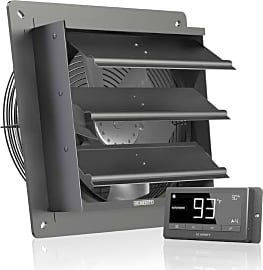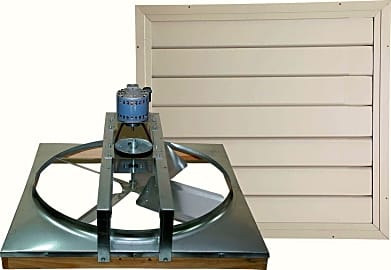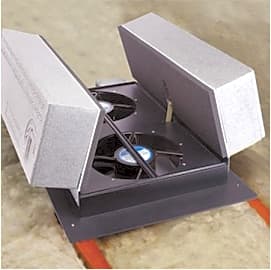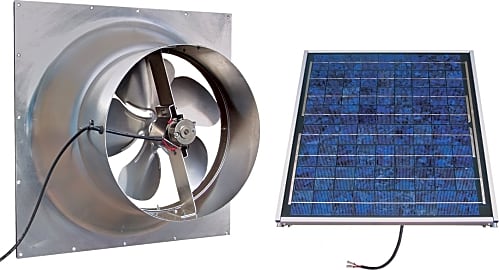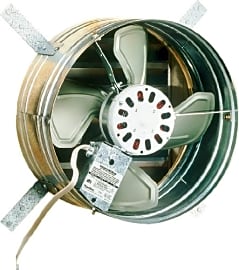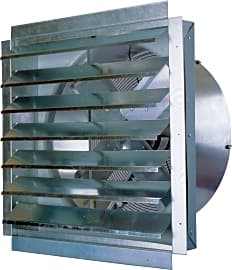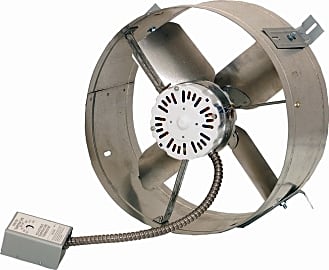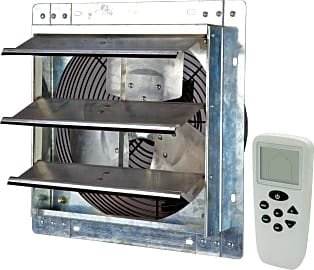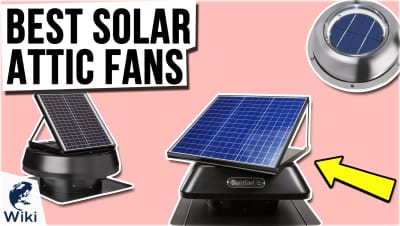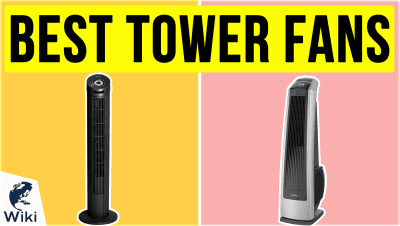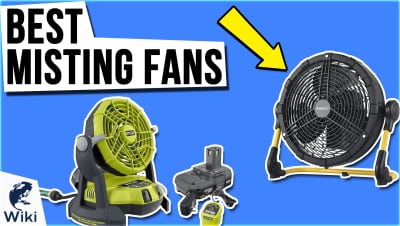The 10 Best Attic Fans

This wiki has been updated 39 times since it was first published in February of 2015. In the summer months, the temperature in your attic can exceed 120 degrees Fahrenheit. But don't lose your cool; our selection of fans will help regulate the conditions in your whole house by either blowing hot air out of the roof vents or pulling in the cooler evening air. They'll minimize humidity levels and the risk of mold, while also helping you save on air-conditioning costs. When users buy our independently chosen editorial choices, we may earn commissions to help fund the Wiki.
Editor's Notes
January 30, 2021:
We made a few changes during this update to add more versatility to our recommendations. For example, we included the AC Infinity Airlift 10 for those who only need to cool down the temperature in small spaces, but who still want something with high-tech features like a digital control panel and component failure alerts. On the opposite end of the spectrum, we added the Maxx Air Industrial, which, as its name implies, is suitable for commercial applications. It boasts many OSHA-compliant features, too. While we wanted to add more connected models, like the Quiet Cool Smart, there currently aren't any other high-quality options on the market. However, we will keep our eye out for new releases that meet our standards and will be updating our recommendations accordingly if that changes.
June 07, 2019:
With energy savings as the primary reason most people want an attic fan, it makes sense to include some solar-powered models, though they won't be a great choice for everyone. Even the most powerful one listed, the Natural Light 36 Watt won't be effective if you live in an area that is often cloudy. For those who live in a sunny enough clime, though, it's surprisingly easy to install and offers a great warranty.
We added the Tamarack Insulated even though it comes in at a much higher price point than the other choices on the list because the insulated door covers really add to the overall energy efficiency and the white offers a more finished look by blending in with the typically white ceilings, for those who use their attic for more than just storage.
Proper Residential Ventilation
Along with reliable heating and cooling, proper circulation and ventilation are also important aspects of maintaining safe interior air.
According to the United States Energy Information Administration's Residential Energy Consumption Survey (or RECS), the average American single family residence expends approximately 48% of its total energy costs on heating and cooling of the home. While this is down from an estimated 57% of total electricity usage in the early 1990s, thanks to better insulation and more energy efficient HVAC systems, it is still a substantial use of energy, and thus a major part of the annual expenses a family incurs simply by living their lives.
Cooled air during the summer and warmed air during the winter are not mere luxuries; it is essential for both comfort and for safety that you maintain temperate living conditions inside your home. That means the use of a central heating and cooling system whenever possible, as these systems are ultimately the most efficient and cost effective way to heat your home during the winter and cool it down in the summer.
Installing a central heating and cooling system costs much more than the purchase of stand alone space heaters or wall unit air conditioners, but such systems use less energy to achieve the same degree of cooling or warming as stand alone units, so ultimately the costs of operating such individual units will surpass the initial cost of the central system.
Along with reliable heating and cooling, proper circulation and ventilation are also important aspects of maintaining safe interior air. And as poor Indoor Air Quality (or IAC) can lead to myriad health complications, including a worsening of asthma, allergies, or even headaches, dizziness, fatigue, or cognitive issues, according to the Environmental Protection Agency, again these are not matters of mere comfort, but of health and safety.
If your home has a central air conditioning and heating system, then simply making sure to replace the air filters as directed and having occasional system evaluation and cleaning by professionals should be all that's needed for safe, clean interior air, but if this system does not have venting in your attic area, then the addition of an attic fan may be warranted. And in the home without central air, not only can an attic fan do wonders to lower the interior temperature during the warmer months, but it can also help to keep the air in your residence cleaner and safer, too.
An Attic Fan For Temperature Regulation
In the hottest days of the summertime, when the ambient air temperature is in the 90s or above, and when the sun is beating down onto your home's roof for hours at a time, the temperature in your attic can soar to as much as 150 or even 160 degrees Fahrenheit. The mixture of hot air rising from inside your home and the conditions extant in most attics, including that solar heat from above and, often, a lack of proper insulation and poor ventilation, act to hold that heat which in turn can dramatically warm up the rest of the home. That means less comfort, and/or it means much more use of your HVAC systems, which puts undue strain on the hardware and increases your home's electrical bills.
A decent attic fan can move dozens of cubic feet worth of air per minute, providing a complete "air change" many times per hour. (An air change is when all the air in a space, in this case the heated air in the attic, is cycled out in favor of new air naturally drawn in through the vents based by the movement from the fan.) A continuous air change cycle could see attic temperatures lowered by as much as fifty degrees or more. That means, for example, that on a day when it is 95 degrees F outside, an attic without a proper attic fan may be 160 degrees in temperature, while an attic with a fan will be only a modicum above 100 degrees. And it means the house below the attic will be much, much cooler still.
The same attic fan that helps to keep your attic (and residence writ large) much cooler in the summertime can also help mitigate one of the most common issues an attic faces in the colder months: moisture build up.
The Attic Fan For Moisture And Mold Reduction
There are few words a homeowner wants to hear less than the word "mold." And there are few conditions under which mold is more apt to grow than in a space that is dark and moist. If you have ever stuck your head up into the average home's attic during the late spring, the summer, or the early fall, then you know those two adjectives -- dark and most, e.g. -- are perfect descriptors of the space.
But even in an attic with a solid roof and without leaking pipes, moisture will still be an issue, without proper ventilation.
A warm, moist summertime attic is especially ripe for mold and mildew growth, but the hot temperatures of the summer often preclude much moisture buildup. In winter, the warm air drifting up from your home meets the cold air seeping in from the roof and vents and often creates the ideal conditions for mold to take hold.
To keep the attic free of mold, keep it free of moisture. That starts with ensuring your roof is in good working order, as a leaking roof is the number one cause of mold build up. It will come as little surprise that another leading cause for attic mold is leaking pipes or a faulty furnace or water heater.
But even in an attic with a solid roof and without leaking pipes, moisture will still be an issue, without proper ventilation. An attic fan can help suck moisture out of the air and maintain the airflow needed to preserve a dry environment in your attic, and they're quite reasonably priced, especially relative to the significant cost of most mold remediation processes.


